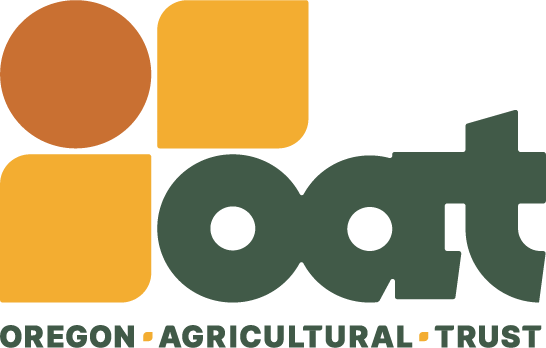We sat down recently with Oregon Women for Agriculture (OWA)’s current President, Sarah Puls to talk about her love of ag, vision for OWA, and what she wishes the general public understood about agriculture in Oregon.
Can you tell us about yourself and your background in ag?
Sarah Puls, President, Oregon Women for Agriculture
I grew up on a citrus farm in central California. My family are 4th generation farmers and have a farm here in Monroe, Oregon as well as one in Orange Cove California. I came here in the summers as a kid working for our family farm and other local farms in the Willamette Valley.
I got my undergraduate degree in Agriculture Systems Management at Cal Poly with a concentration in environmental management, moved to Oregon and ended up working in private industry as an environmental consultant on diverse projects from wetlands to brownfield clean up. I then worked in county and city government for 9 years, in environmental health and safety, ultimately focusing on drinking water.
Now as the Preparedness Planner for the Oregon Department of Emergency Management, I am reminded daily how everything is tied together: drinking water, environmental management, public health, agriculture, food safety and emergency management.
Can you describe the mission of OWA and what inspired you to get involved?
When I took a job not directly in agriculture, I knew I wanted to stay involved and support ag. My mother was involved in California Women in Agriculture when I was a kid so I joined my local OWA about 7 years ago. I served on the board and eventually became president of our local chapter and I am now president of the state board.
Our mission is working together to communicate the story of today’s agriculture. To educate and inform our members and the public about the importance of agriculture to the economy and to the environment. To engage all phases of Oregon agriculture having mutual concerns, and to do everything possible to see that agricultural interests are heard and dealt with fairly and to support and encourage research that will benefit agriculture.
I am really glad that this organization exists which allows me to be involved in something that has been a part of my family heritage and culture. It is a way to provide leadership and opportunity to support and advocate for agriculture. I think someday I'll find my way back to ag in some capacity, maybe as our family farm transitions to the next generation. But for now, being part of OWA has given me the opportunity to still be involved in the agriculture industry.
What is your vision for OWA as their new president?
Oregon Women for Agriculture was organized in 1969 by Willamette Valley farm women who were concerned with regulatory issues impacting the grass seed industry. Since that time, this all-volunteer group has broadened its scope to include nearly all facets of agriculture. One of my goals for my presidency is to help revive our membership and volunteers. We are an all-volunteer organization, and we are in need of fresh energy and ideas to keep this long-standing organization going.
What do you wish the general public understood about agriculture and why?
Modern agriculture has made significant strides in sustainability, animal care, and food safety. Technological advancement such as precision farming, crop protection, and genetic improvements have allowed farmers to produce more food with fewer resources. Farmers and ranchers play a crucial role in feeding the world, and their efforts deserve trust, recognition and understanding.
What is your vision and/or wish for the next generation’s involvement in, or understanding of, agriculture?
There is a trust gap between farmers and consumers. Better communication of the advancements in farming and ranching can help bridge this gap. Farmers need to share their stories and explain how their practices align with societal values.
Ag in the Classroom is a great program that OWA supports, and we do a lot of elementary education outreach around that. But I am also thinking of college-age students who are trying to figure out what they're going to do in the future. I encourage people to go into an ag communications program or just get involved in advocating for the ag industry like we do at OWA. Or they could get involved in any other organizations with similar goals like their local Farm Bureau, Oregon Women in Timber, and Oregon Cattlewomen's Association. A lot of us have the same goals around communication about these issues and advocating for the industry in general.
You don’t have to be in agriculture in Oregon to be a member of OWA. Everyone eats. If you like food, or you want to understand better how the ag industry works, consider getting involved.
So that would be one of my main visions for the next generation is to be more involved in these organizations, be willing to step up and be a leader or a participant and help communicate the story of agriculture in Oregon.
Oregon Women for Agriculture has eight chapters across Oregon: Central Oregon, Columbia Gorge, Eastern Oregon, Linn-Benton, Lane, Marion- Clackamas, Yamhill, and Polk that support Oregon agriculture in numerous ways: from providing crop identification signs, to advocating at the state and federal levels, to a youth grant program supporting ag-related projects, and much more. Visit their website to read about all of their programs.
Interested in getting involved in Oregon Women for Agriculture? Reach out to us via email at info@owaonline.org. You can also find us on facebook and instagram.




